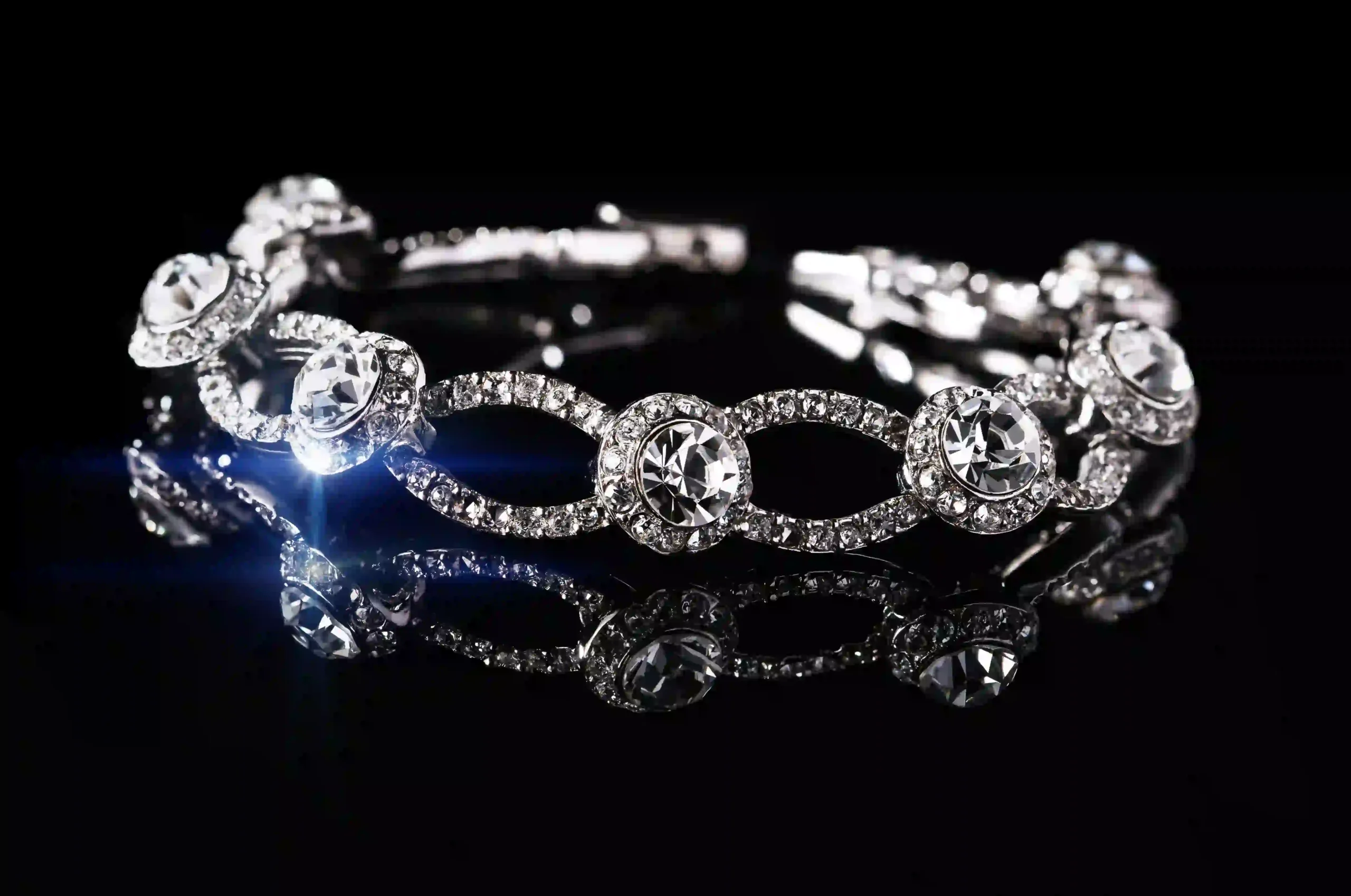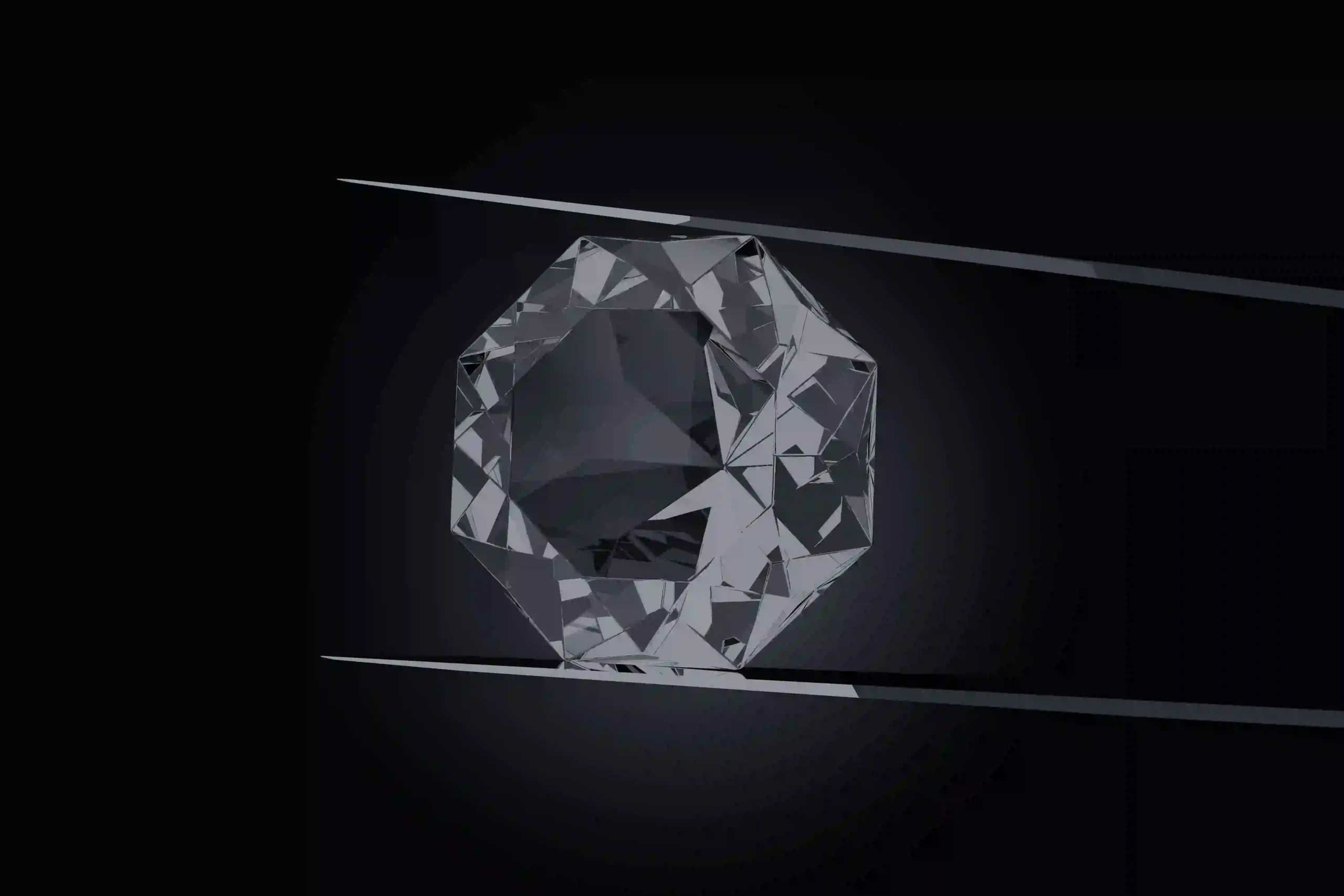Embarking on a quest for the perfect diamond alternative requires not just a keen eye for sparkle but also a savvy understanding of the market’s nuanced language. “Fake diamond” may not charm the ear, but in a world where terms can deceive, clarity about what you’re buying becomes your best ally. This guide will demystify the terms and help you choose a gem that shines with integrity, without draining your resources.
Imitation Diamonds vs Synthetic Diamonds: The Difference
The quest for diamond alternatives brings us into a labyrinth of terminology where “simulated” and “synthetic” diamonds gleam on separate paths. The distinction is critical, yet often muddied by marketing strategies. The Federal Trade Commission condemns the misuse of these terms, yet the online marketplace is a wild frontier where vigilance is your guiding star. Let’s embark on this journey together, armed with the knowledge to make choices that sparkle with confidence.
Imitation Diamonds
Imitation diamonds, or simulated diamonds, dazzle with a beauty designed to mirror that of natural diamonds. However, beneath their lustrous surface, they share none of the chemical or physical robustness that gives diamonds their enduring allure. Their price, enticingly lower, is the first clue that these gems, while beautiful, are not the real deal. Nowadays, many high-quality alternatives allow you to buy imitation diamonds that look real.
Synthetic Diamonds
Synthetic diamonds are the alchemists’ dream realized: genuine diamonds created not beneath the earth over eons but in the precision of a lab. They boast the same physical and chemical characteristics as their mined counterparts, offering an ethical, more accessible alternative. While cheaper than mined diamonds, their price reflects their authenticity, standing significantly above the realm of imitation gems.
Types of Fake Diamonds
In the realm of imitation diamonds, several stars shine brightly, each with its unique appeal.
Cubic Zirconia
Cubic Zirconia (CZ) is the stalwart of simulated diamonds, prized for its affordability and its dazzling resemblance to the real thing. Though it lacks the hardness of diamonds, its brilliance makes it a favored choice for those seeking glamor without the price tag. This is a great option for those who want to get fake diamonds that look real.
Moissanite
Moissanite, a gem born from the stars, is almost as hard as a diamond and surpasses it in brilliance and fire. This gem offers a durability and sparkle that closely rivals that of diamonds, making it a beloved option for those desiring the diamond’s beauty without its cost.
White Sapphire
White Sapphire presents a more subdued alternative, lacking the fiery brilliance but offering a durable and less expensive option. Its charm lies in its simplicity and hardness, appealing to those who seek elegance without ostentation.
White Topaz
White Topaz offers a soft, clear beauty at a fraction of the diamond’s cost. Its lesser hardness makes it more prone to wear, but its gentle glow captivates those looking for a modest alternative to the traditional diamond.

Navigating the world of diamond alternatives with this compass of knowledge, you’re well-equipped to choose a gem that resonates with your values, style, and budget. Whether drawn to the ethical radiance of synthetic diamonds or the affordable beauty of simulated stones, your journey toward the perfect gem begins with understanding.

